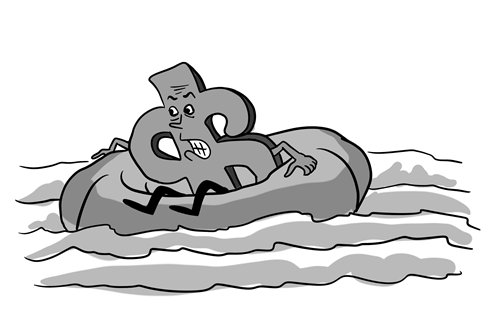HOME >> BUSINESS
Trade tensions on multiple fronts set the stage for US economic recession
By Wang Jiamei Source:Global Times Published: 2019/6/20 20:38:40

Illustration: Luo Xuan/GT
While the US economy is about to break the longest economic expansion record in its history, recession forecasts have quickly made the headlines in recent days amid the continuing trade war and the weakening global economy.
Various institutions and financial professionals have been quick to issue warnings that the US economy is on the brink of taking a turn for the worse. For instance, Oxford Economics said that the odds of a recession in the next six months stand at 53 percent. DoubleLine Capital's CEO Jeffrey Gundlach said, last week, that the chance of a recession starting in the next six months have risen to 40-45 percent, and 65 percent within the next year. According to a recent report by the National Association for Business Economics, based on a survey taken by 53 economists, the risk of a recession within this year is only 15 percent, but will rise sharply to 60 percent by the end of 2020.
Fears of a US economic recession seem totally justified, given the fact that recession signals are becoming more and more obvious these days.
To start wih, US economic data continues to deteriorate. When the US economy enters a recession, employment usually sees a slowdown, indicating that the labor market is losing momentum as economic growth slows. That's exactly what's happening now. The private sector added only 27,000 jobs in May, according to the ADP National Employment report, the lowest number since March 2010. Also in the same month, non-farm payroll employment edged up to 75,000, a weak gain that indicates nothing but the slowing of hiring. Meanwhile, there are other data showing weak manufacturing and low inflation.
While some may argue that by other measures the economy is quite healthy with low unemployment and rising wages, an inverted yield curve in the bond market may be a more direct warning of a possible recession in the US economy. At the end of May, the 3-month Treasury yield started to rise above the 10-year yield, and the inversion still continued and even extended into June. Typically, investors demand higher returns for long-term bonds to compensate for the higher risk of locking up their money for a longer period of time. But, when more and more investors want to buy long-term bonds due to concerns over future economic trends, the long-term yield will go down, and even below the short-term one. Historically, the inversion of the yield curve has usually preceded US recessions, which is why the phenomenon is now seen as a signal that economic growth is very likely to ebb.
It needs to be pointed out that the 3-month yield rose above the 10-year rate once in March, marking the first time since the last recession. At that time, most investors still believed that the US economy would maintain its steady growth, but amid the escalating trade tensions between China and the US, worries over a potential recession have soared significantly.
In fact, increasing tariffs on Chinese goods may only see US consumers spend more money on the same Chinese products. The more tariffs the US imposes on imports from China, the heavier the burden on domestic consumers, which is essentially a big tax on American families and businesses. This will hurt business confidence and the market, thus derailing the US economy as a whole. Also, the countermeasures China may take, including, but not limited to, the depreciating the Yuan and cutting its holdings of US Treasuries, could prove even more detriments to the US economy.
Moreover, the Trump administration is going after, not just China, but also other major trading partners like Mexico and India. The uncertainty surrounding the US trade policy has made business sentiment even more uncertain than before, which will also result in great losses for the US economy.
From the perspective of the Federal Reserve, factors like trade war risks and slower global economic growth have stimulated speculation about monetary policy changes, and even the Fed officials have started to hint at possible interest rate cuts should they become necessary. James Bullard, president of the Federal Reserve Bank of St Louis, said, in early June, that lower interest rates might be "warranted soon." Then, Fed chairman Jerome Powell indicated that the central bank was ready to act to sustain the economic expansion. Fed vice chairman Richard Clarida even proposed the idea of insurance interest rate cuts that could prevent a recession.
Still, the general market idea is that sooner or later the Fed will be forced to cut the interest rates significantly and quickly as recession risks will become increasingly obvious and inevitable. At present, despite calls for a June cut, the Fed is generally expected to cut rates three times this year, in July, September, and December, respectively.
Once the Fed slashes rates, it will signal a major turning point for its monetary policy. To a certain extent, this will also be a confirmation of the market expectation that the US economy is now really in trouble.
The author is a reporter with the Global Times. bizopinion@globaltimes.com.cn
Posted in: EXPERT ASSESSMENT